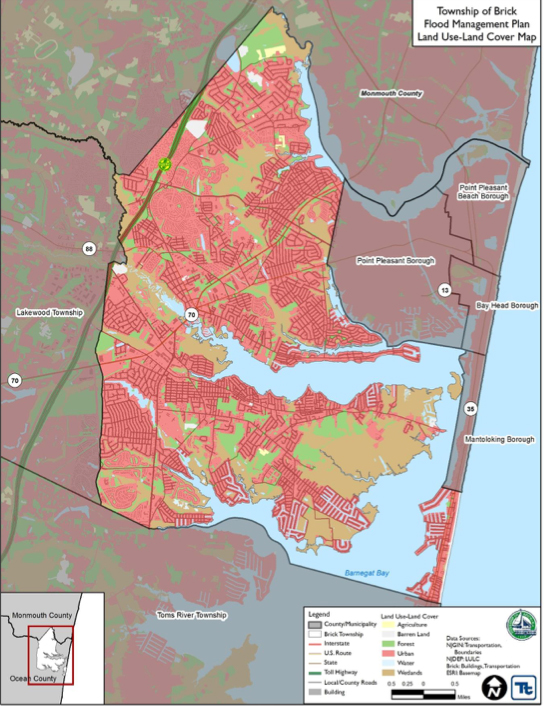
BRICK – Township officials updated the public on what measures have been taken to reduce flood insurance for residents.
As part of the township’s participation in the National Flood Insurance Program’s Community Rating System (CRS), Brick’s Floodplain Management Committee must submit an annual review on the progress it has made on implementing a number of initiatives.
Some of the initiatives completed in this reporting period include the installation of a generator at the Department of Public Works, which is the command center for all weather-related events, and installation of a protective canopy for their critical equipment.
Submersible wastewater pump stations were completed throughout the township, and $120,619 was spent on check valves to prevent backflow in various low-lying areas.
Also, the governing body passed an ordinance that establishes impervious surface coverage limits for residential properties while home elevations continue.
Impervious surfaces are asphalt and any other material that keeps rain from eventually making it into the groundwater.
By following a litany of best practices, towns can reduce the cost of flood insurance for residents.
The Floodplain Management Plan identifies 140 hazard mitigation initiatives, described as activities that reduce or eliminate losses resulting from the impacts of flooding.
There are over two dozen objectives in the plan with initiatives ranging from updating local ordinances to reflect and address flood hazards, to ensuring that capital improvements are constructed with storm- and flood-resilient features.
The flood hazard mitigation plan includes natural resource protection, such as reinforcing and protecting dune systems and coastal wetlands, and making improvements to stormwater infrastructure.

According to the annual review, which was published this month, 81 have been completed to date, with 56 of those as complete but part of ongoing programs.
Action was completed on 22 of the 140 initiatives this year.
There was no action taken on eight initiatives. 29 of the 140 initiatives were removed since the inception of the plan due to elimination of a program, and 13 of the initiates were added since the plan began.
Flood hazard mitigation has long- and short-term strategies including planning, policy changes, programs, projects and other activities that can mitigate the impacts of floods. A flood is an inundation of normally dry land resulting from the rising and overflowing of a body of water that can develop slowly over a period of days or happen quickly.
Participation in the CRS not only helps to reduce and avoid flood damage to insurable property, but results in a 20 percent savings on flood insurance premiums for compliant structures in the township. As of July 2021, Brick has achieved a Class 6 rating in the CRS, resulting in the 20 percent savings.
The CRS program was implemented in 1990 as a voluntary program, and communities are rewarded for actions that meet three goals: reduce flood damage to insurable property; strengthen and support the insurance aspects of the National flood Insurance Program; and encourage a comprehensive approach to floodplain management.
Since 1953, there have been 16 flood-related events in Ocean County that have caused significant damage to trigger a presidential disaster declaration, which equates to a significant flood event around every 4.25 years.
According to a 2014 Ocean County Hazard Mitigation Plan, approximately 20 percent of the parcels in Brick are vulnerable to future flood damage.
There are currently 4,312 flood policies in the township and 3,271 instances of paid losses totaling over $200 million.
The Floodplain Management Planning Committee, which meets quarterly, included co-coordinators Township planner Tara Paxon and township engineer Elissa Commins.
The committee also includes other department heads, the Barnegat Bay Partnership, a council member, a district teacher and members of the public.
The plan may be viewed online on the township website. Hard copies of the plan are available at the library and the township clerk’s office.






